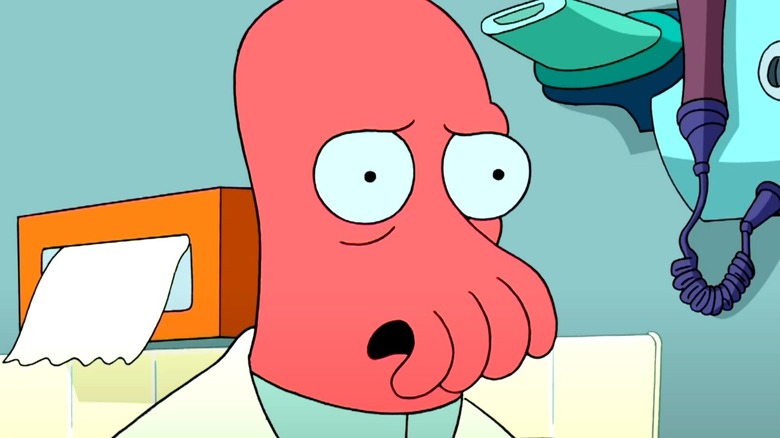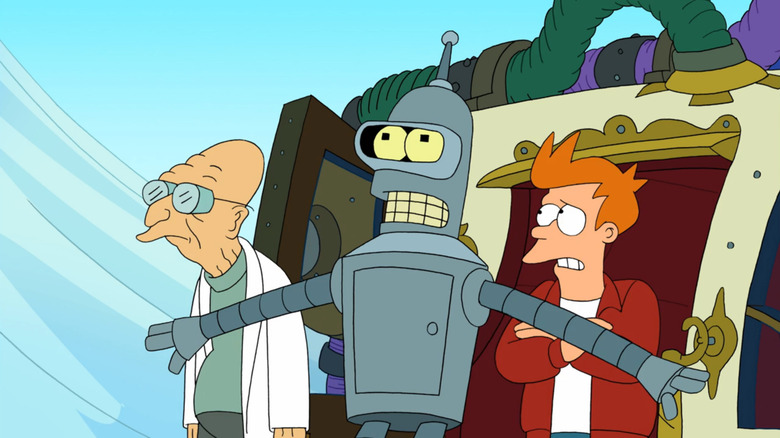Is This The Inspiration Behind Futurama's Forward-Only Time Machine?
"Futurama" is well known for its scientifically minded plots, as would surely be expected of a show written by doctors of math and computer science. Over its many seasons, the show has tackled concepts from body-swapping to parallel universes, often resulting in some of its best episodes.
Season 7, Episode 7 ("The Late Philip J. Fry") introduces one of the most complex plot devices in "Futurama" history: a time machine that only goes forward. Professor Farnsworth (Billy West) tells Fry (also Billy West) that he invented it to prevent something disgusting from happening during backward time travel. Of course, this is a reference to the events of Season 4, Episode 1 ("Roswell that Ends Well") in which Fry inadvertently becomes his own grandfather. However, while attempting a one-minute forward test with Fry and Bender (John DiMaggio), Farnsworth overshoots and lands the trio in the year 10,000.
To return to their own time, the three are forced to travel to a time when backward time travel has been invented. Paradoxically, this means that the trio must travel forward so they can go backward. The premise gives "Futurama" an excuse to indulge in several wacky scenarios, as the group's journey through time introduces far-future periods in which humanity is enslaved by giraffes, knights ride on ostriches, and where robots have taken over. Like the best of the show's episodes, however, it's also a remarkably complex concept. It is so complex, in fact, that it may have been inspired by one of history's greatest theoretical physicists.
Stephen Hawking's time travel theories may have inspired Futurama
As it turns out, the idea of a time machine that only goes forward had been theorized in real life by renowned theoretical physicist Stephen Hawking before "Futurama" aired its own take on the idea. In a 2010 column for the Daily Mail, the late genius theorized a model of time travel in which a train travels around the world moving as close to the speed of light as physics will allow, meaning it would circle the globe seven times per second. This, he proposed, would cause time on board the train to begin moving relative to the time outside it. If it kept pace for 100 years, it would arrive 150 years in the future. Critically, however, Hawking posited that only seven days would have passed inside the train. "In one week they'd have traveled 100 years into the future," Hawking wrote.
The key difference between Hawking's theory and the time machine in "The Late Philip J. Fry" is that the device in "Futurama" seems to stay put in the same location it began, whereas Hawking's theory requires continuous motion at near-light speeds. When Farnsworth, Fry, and Bender arrive in the year 10,000, the remnants of Planet Express are still visible. Assuming the show doesn't consider the continuous motion of Earth in orbit, that means they haven't moved in the three dimensions of space, only the fourth dimension of time. While "Futurama" can take a year per episode to create, it seems like quite the coincidence that this "Futurama" episode aired only three months after Hawking's article was published.

